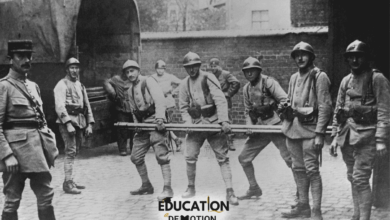The Rich Legacy of Gaylord Springs 1990 History

Nestled in the heart of Tennessee, Gaylord Springs Golf Links has become synonymous with scenic beauty, impeccable design, and a legacy that traces its roots back to 1990. Over the years, this iconic golf course has transformed into a world class destination for golfers and nature enthusiasts alike. Delving into the Gaylord Springs 1990 history reveals not only the story of its inception but also its remarkable journey of growth, preservation, and charm.
The Birth of Gaylord Springs in 1990
In 1990, Gaylord Springs began as an ambitious project aimed at creating a golfing experience that merged natural beauty with architectural brilliance. Located just outside Nashville, this course was envisioned as a haven for golfers, offering challenging gameplay amidst breathtaking landscapes. Designed by the renowned architect Larry Nelson, a PGA legend, Gaylord Springs was a testament to meticulous planning and attention to detail.
The course embraced the Cumberland River’s serene surroundings, making the environment as much a part of the experience as the game itself. With rolling fairways, pristine greens, and striking water features, Gaylord Springs quickly gained recognition as a premier golf course in the Southeast.
Why 1990 Marked a Milestone for Gaylord Springs
The year 1990 was pivotal not just for Gaylord Springs but for the broader Nashville community. At a time when golf courses were emerging across the U.S., Gaylord Springs stood out for its commitment to sustainability and integration with nature. The course showcased how modern design could coexist harmoniously with the environment, a forward-thinking approach that was groundbreaking for the time.
Additionally, its proximity to Nashville’s thriving music scene added an extra layer of appeal. Visitors could enjoy world-class golf by day and vibrant nightlife by night, cementing Gaylord Springs as a must-visit destination.
Signature Features That Defined Gaylord Springs
The Unique Course Design
Larry Nelson’s design for Gaylord Springs combined strategic bunkering, natural wetlands, and challenging water hazards to create a course that tested both amateur and seasoned golfers. It wasn’t just about the game it was about experiencing the land in its most authentic form.
Preservation of Natural Beauty
From the beginning, Gaylord Springs focused on preserving the natural flora and fauna of the region. The course was landscaped to blend seamlessly with the Cumberland River’s ecosystem, ensuring minimal disruption to the environment.
A Commitment to Excellence
Over the years, Gaylord Springs has undergone numerous upgrades and renovations, but the commitment to excellence remains unchanged. It continues to maintain its reputation for pristine conditions and a memorable golfing experience.
Gaylord Springs’ Role in Golfing History
Gaylord Springs has played host to countless tournaments, further solidifying its status as a staple in the golfing community. Its championship level course attracted regional and national competitions, showcasing Nashville’s potential as a sports tourism hub.
The Gaylord Opryland Resort’s proximity only added to its charm, offering guests a luxurious stay after a day on the course. This unique blend of recreation and relaxation contributed to Gaylord Springs’ legendary status.
Gaylord Springs 1990 History: A Legacy Worth Preserving
The history of Gaylord Springs is more than just a timeline of events; it is a testament to vision, resilience, and passion for the sport. From its humble beginnings to becoming one of the top golf courses in Tennessee. Its legacy is rooted in its ability to evolve while staying true to its core values.
Even today, walking through the lush fairways and challenging greens is like stepping back into 1990 a year that set the foundation for everything Gaylord Springs has achieved.
What Makes Gaylord Springs a Timeless Destination?
- Historic Charm: Its rich history and ties to 1990 remain a central part of its allure.
- Scenic Beauty: The tranquil backdrop of the Cumberland River elevates every visit.
- World-Class Amenities: From the pro shop to the practice facilities, every detail is designed to enhance the guest experience.
Preserving the Gaylord Springs Legacy
As environmental challenges increase, Gaylord Springs’ commitment to sustainability remains inspiring. By adopting eco-friendly practices and prioritizing conservation, it sets a standard for other courses worldwide. This approach ensures that future generations can continue to enjoy the natural beauty that defines Gaylord Springs.
Conclusion
The Gaylord Springs 1990 history is a fascinating chapter in Tennessee’s golfing legacy. Its blend of history, innovation, and natural charm has helped it remain a top destination for over three decades. Whether you’re a golfer or simply a lover of scenic beauty. Gaylord Springs offers an experience that is as timeless as it is unforgettable.




